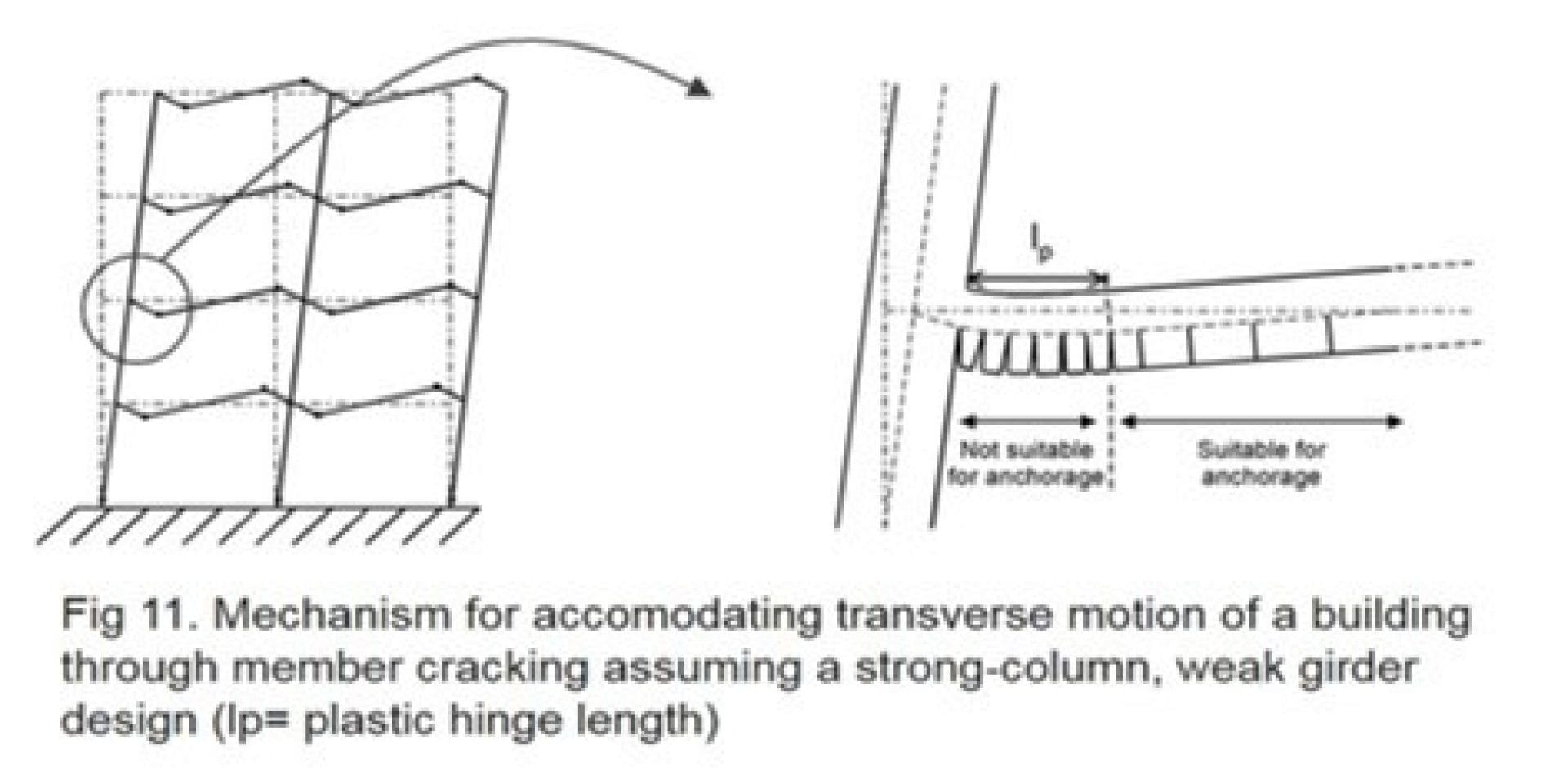BEHAVIOR OF ANCHOR SYSTEMS
In cracked concrete under tension loading
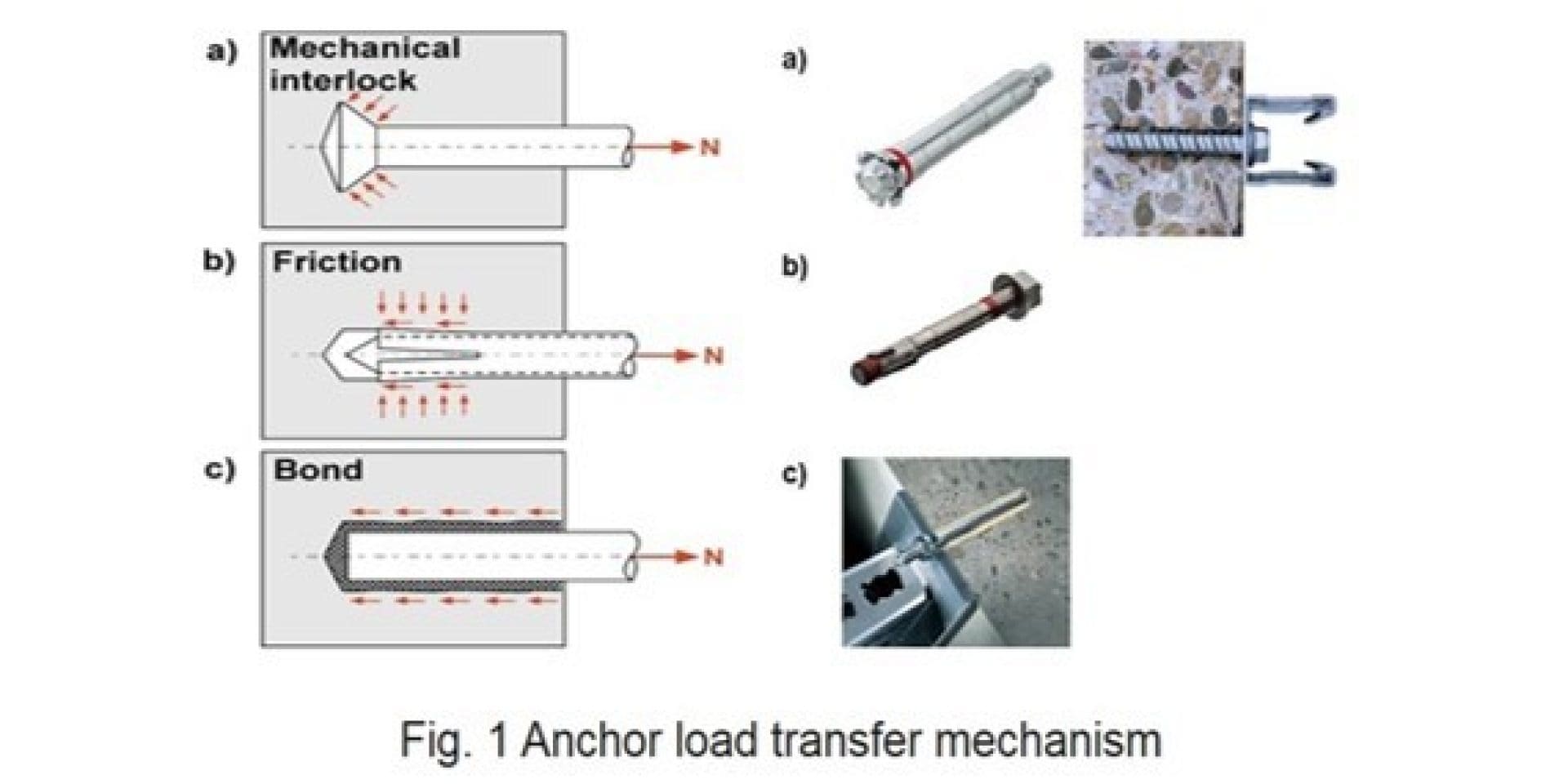
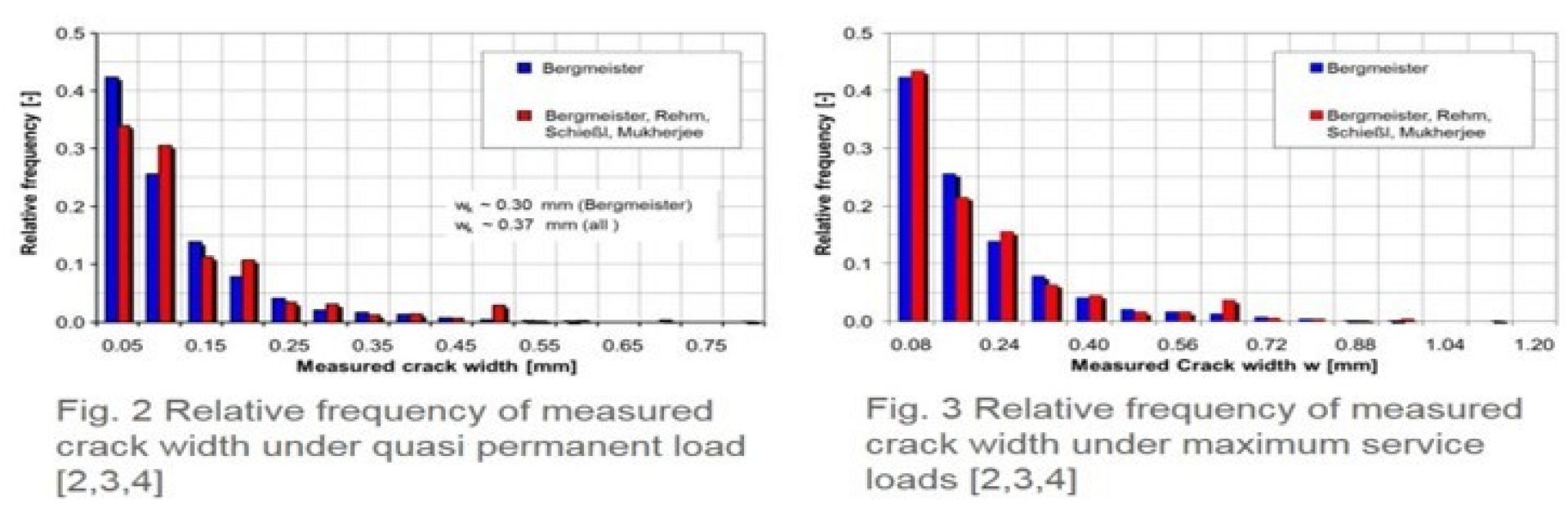

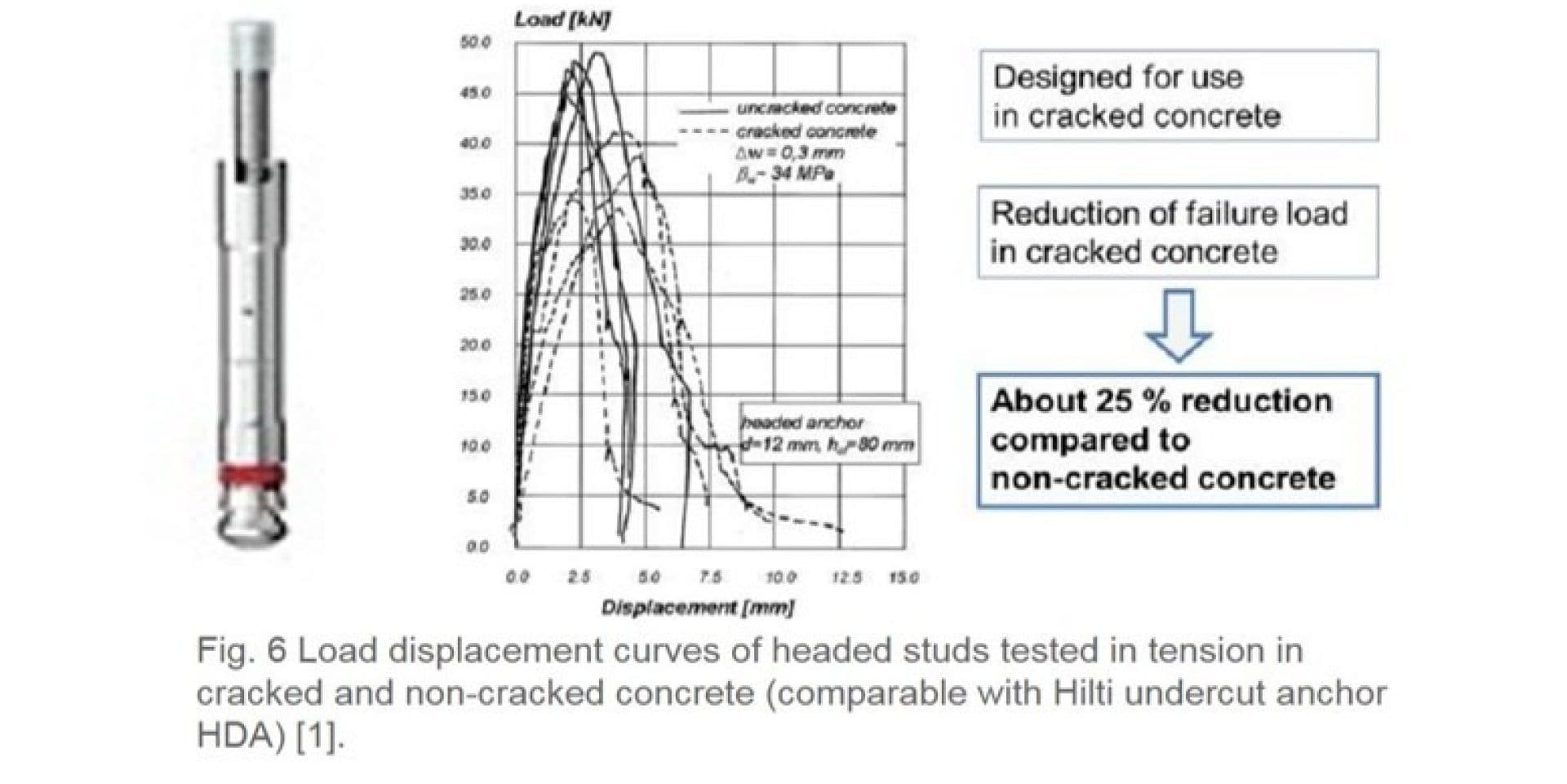
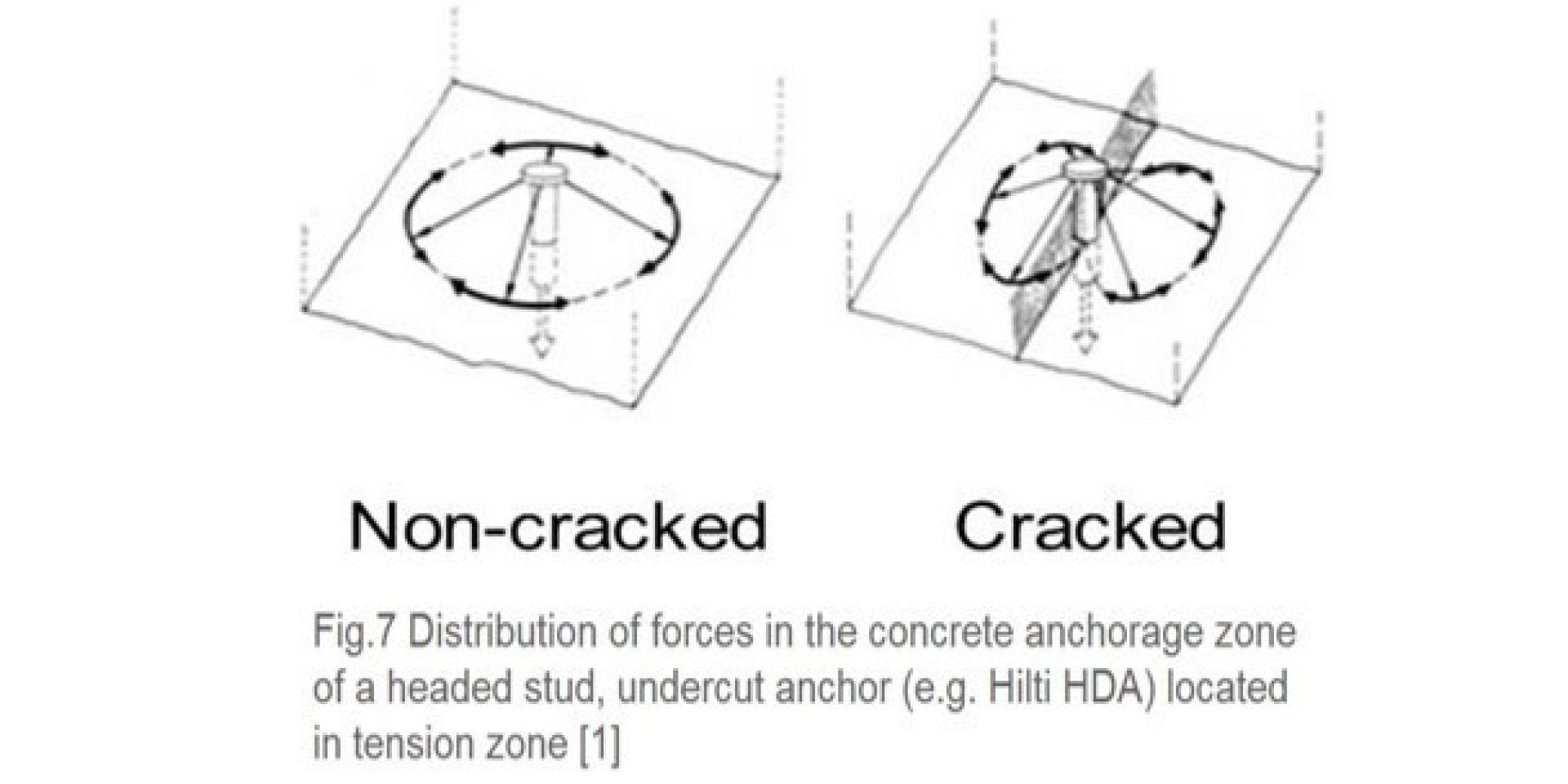
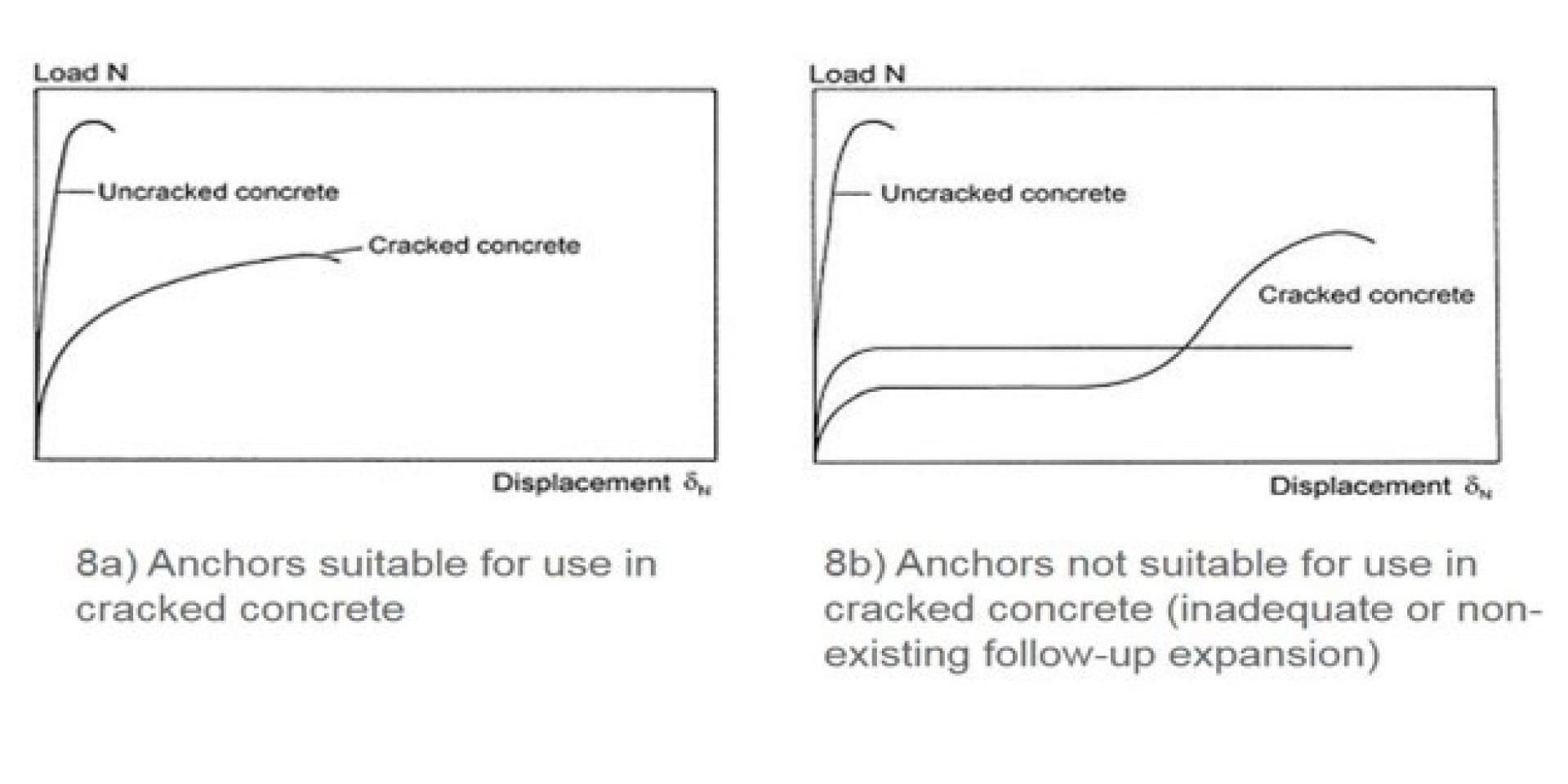
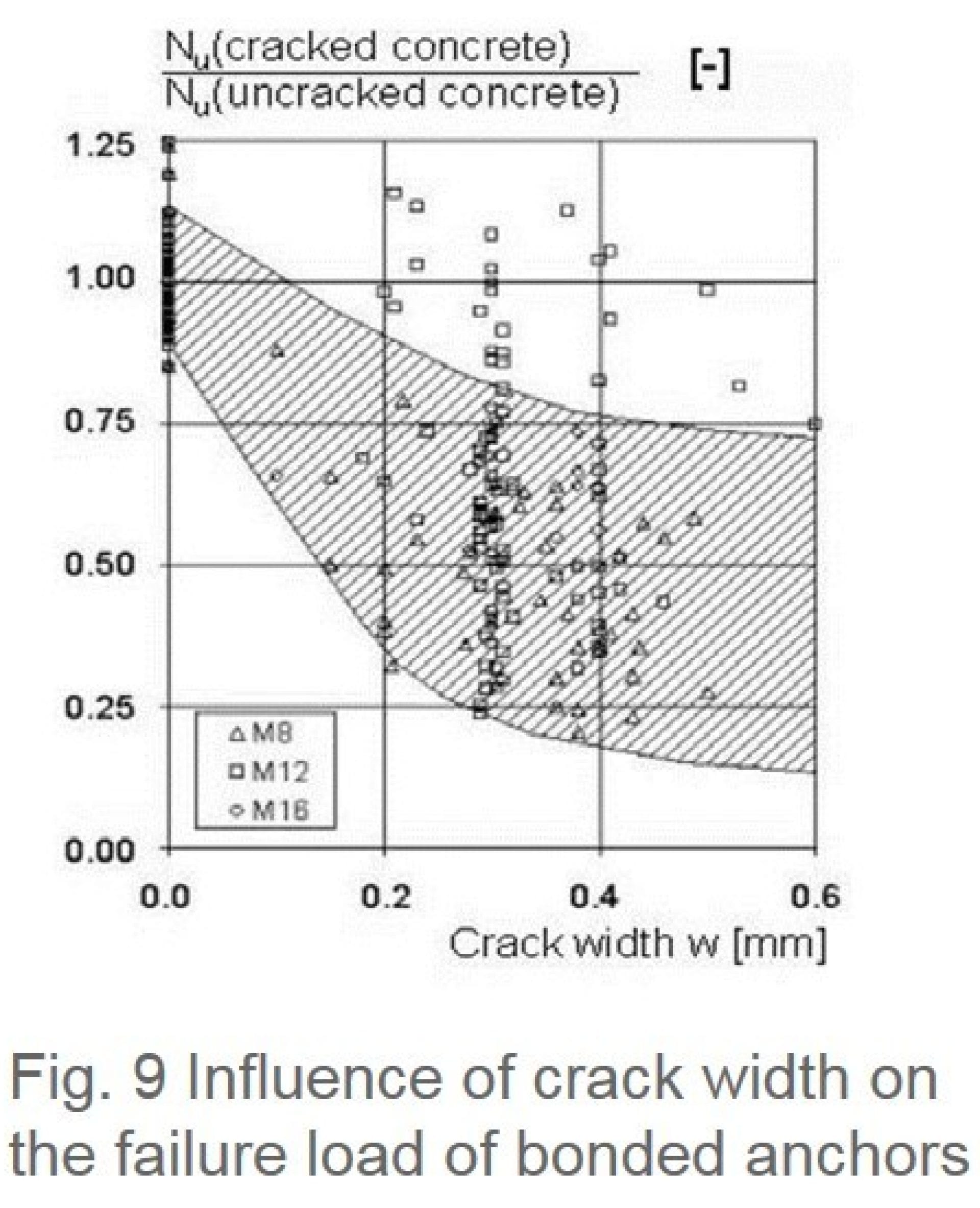
In contrary to this, tests performed in [6] in cracked concrete with Hilti HIT-RE 500-SD according to the procedure mentioned above showed only a reduction of 25% for the value in non-cracked concrete due to the significantly improved penetration behavior and high material strength of the mortar compared to the systems given in Fig. 9.
Note, that the reduction is comparable to the behavior of undercut and expansion anchors.
The reduction of the tension capacity by cracks for bonded anchors systems in case of pullout failure can be explained as follows. Owing to the high tensile strength of the mortar, crack opening after anchor installation results in a redirection of the crack around the anchor along the interface between mortar and concrete, effectively causing bond loss on one side of the anchor.

Assuming that the crack trajectory as shown in Fig. 10 occurs over the full embedment depth, the bond capacity is theoretically 50% of the capacity in non-cracked concrete. Investigations in [6] indicated that this assumption is not generally valid.
Using Hilti HIT-RE 500-SD shows significant less bond loss compared to other mortar types (~25% on one side). This is mainly based on the fact that the mortar system influences the crack trajectory compared to the crack trajectory given in Fig. 10 due to its penetration behavior into the pores of the concrete.
